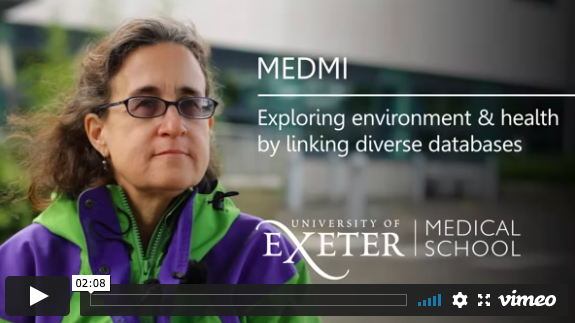European Centre for Environment & Human Health

The user can select from a number of data sets before running a regression model. The application shows the results of the model using tabular data and a variety of figures.
Explore health-relevant side events, news and resources from the 2025 UN Climate Conference.
Health at COP30 >European Centre for Environment & Human Health

The user can select from a number of data sets before running a regression model. The application shows the results of the model using tabular data and a variety of figures.
The MEDMI project has developed a robust proof of concept for using a web-based browser to access and interrogate data. Using state-of-the-art statistical approaches, it has shown that a web application can link and analyse different datasets in an accurate, rigorous and user-friendly manner.
Bringing together Met Office data on climate variables, daily ozone measurements and ONS Mortality data for London over a 5 year period, the project initially sought to replicate research that linked temperature, air quality, and death rates using time series regression analysis.
The approach was to have user-friendly input screens to guide the user through the process, so they can perform their analysis without the necessary technical skills of some statistical software packages (ie Stata).
Having successfully replicated the research, the browser was extended to incorporate additional datasets such as pollen and daily emergency hospital admissions data – demonstrating how the application could be readily adapted to combine datasets from different sources and give users the ability to explore new hypotheses (additional data is available through the full version of the app).
The flexibility of the tool also allows users to assess the impact of time lags on any relationships they might uncover. For example, the effects of high or low temperatures on mortality levels can be assessed over a period of time, providing an insight into the amount of time authorities have to prevent deaths after an extreme temperature event.
It is hoped that by accurately modelling thresholds and lag times the tool will help to evaluate and improve current extreme temperature early warning systems, providing powerful guidance for Public Health England, local health authorities, healthcare professionals and vulnerable individuals.
Importantly, this research project has established an ongoing link between Met Office data and a human health database. In the future it’s hoped this could help to enable ongoing surveillance of links between weather and health, with the potential to provide rapid hypothesis testing and ability to identify health risk ‘hotspots’.
Technologies Used
The application is built on open source technologies including PostgreSql database and the Python web framework Django. PostgreSql was used as it has advanced spatial libraries, which would allow for the application to be developed further to include spatial analysis. Python includes a number of statistical packages which we could leverage, as well as being able to run in a web application using Django.
The client is built using Bootstrap and Angularjs to allow for a user-friendly responsive graphical user interface with visualizations such as charts.